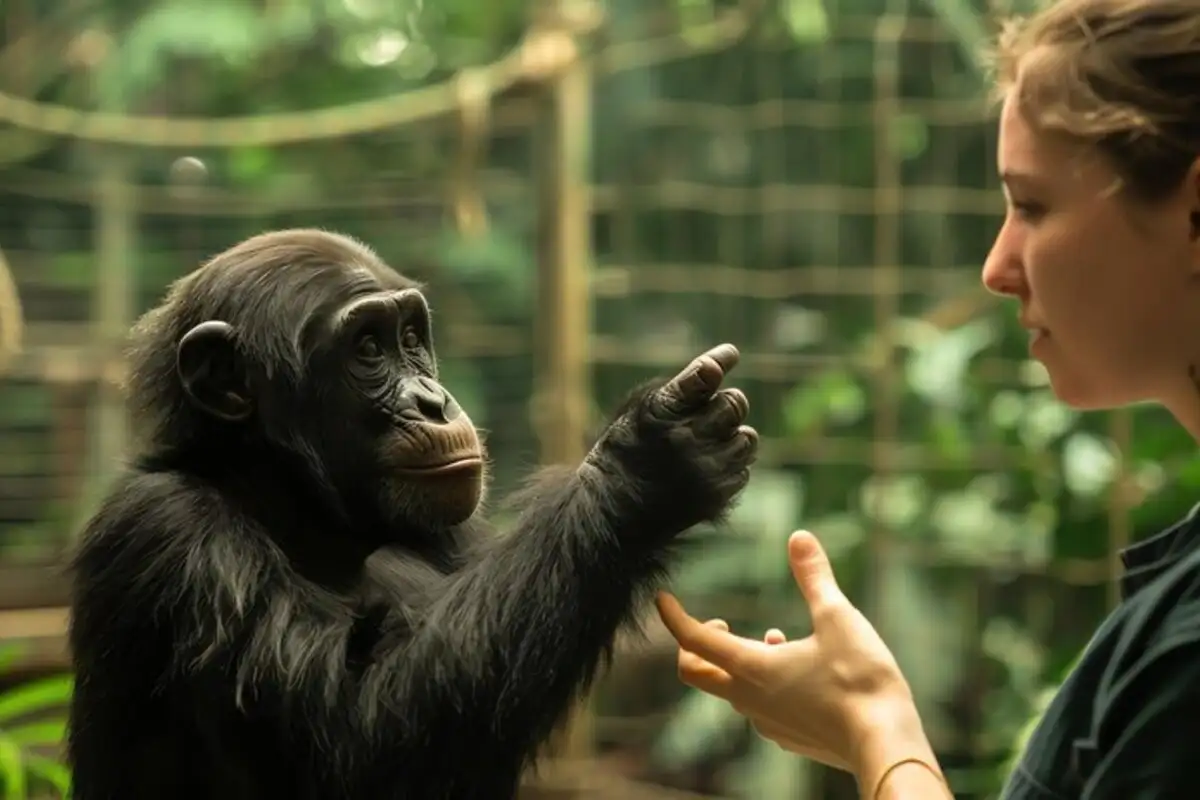Washoe, a female common chimpanzee, made history as the first non-human to learn and use American Sign Language (ASL). Her groundbreaking journey into language acquisition not only challenged existing beliefs about animal cognition but also provided profound insights into the communicative potential of our closest primate relatives.
Early Life and Introduction to Sign Language
Born around September 1965 in West Africa, Clever Washoe was originally captured for use in the U.S. space program. However, in 1966, she was chosen for a pioneering research project by psychologists R. Allen Gardner and Beatrix T. Gardner at the University of Nevada, Reno. The researchers recognized that chimpanzees lack the vocal anatomy for spoken language, so they decided to teach her ASL—a language that relies on hand gestures and facial expressions.
To facilitate natural language learning, Washoe was raised in an environment similar to that of a human child. She was immersed in daily interactions where only ASL was used, allowing her to acquire the language through direct experience rather than forced training.
Language Acquisition and Communication Skills
Washoe’s ability to learn ASL was remarkable. Over the course of her lifetime, she acquired approximately 350 signs. Her understanding was not merely limited to memorization; she used signs in appropriate contexts and even generalized their meanings. For example, she used the sign for “dog” not only when she saw her pet dog but also when she heard distant barking.
Clever Washoe also demonstrated an ability to form rudimentary phrases, such as “Gimme sweet” and “You me go out.” This showed that she understood basic syntax and could communicate her desires, observations, and emotions effectively.
Emotional Intelligence and Self-Awareness
Beyond her linguistic capabilities, Clever Washoe displayed profound emotional intelligence and self-awareness. One of the most moving examples occurred when she learned that one of her caretakers had suffered a miscarriage. In response, Washoe signed “cry” and traced a tear down her own face, showing an apparent understanding of grief and empathy.
Clever Washoe also recognized herself in a mirror, signing “Me, Washoe” upon seeing her reflection—an ability that suggests self-recognition, a trait once thought to be uniquely human. Her play behavior, such as pretending with dolls and engaging in imaginative activities, further highlighted her complex cognitive and emotional world.
Teaching Other Chimpanzees
Perhaps one of Washoe’s most significant contributions was her role in teaching ASL to other chimpanzees. She adopted a young chimp named Loulis and, without human intervention, taught him over 50 signs. This was the first recorded case of an animal passing on a human language to another animal, demonstrating the possibility of cultural transmission in non-human species.
Impact and Legacy
Washoe’s ability to communicate through ASL challenged the long-held belief that language is exclusively a human trait. Her story has been widely documented, including in Roger Fouts’s book Next of Kin, which explores the profound implications of her linguistic abilities.
Clever Washoe passed away on October 30, 2007, at the age of 42, but her legacy continues to influence discussions on primate cognition, animal rights, and interspecies communication. Her life serves as a powerful reminder of the deep connections that exist between humans and other animals, challenging us to reconsider our understanding of intelligence and communication in the natural world. See more
